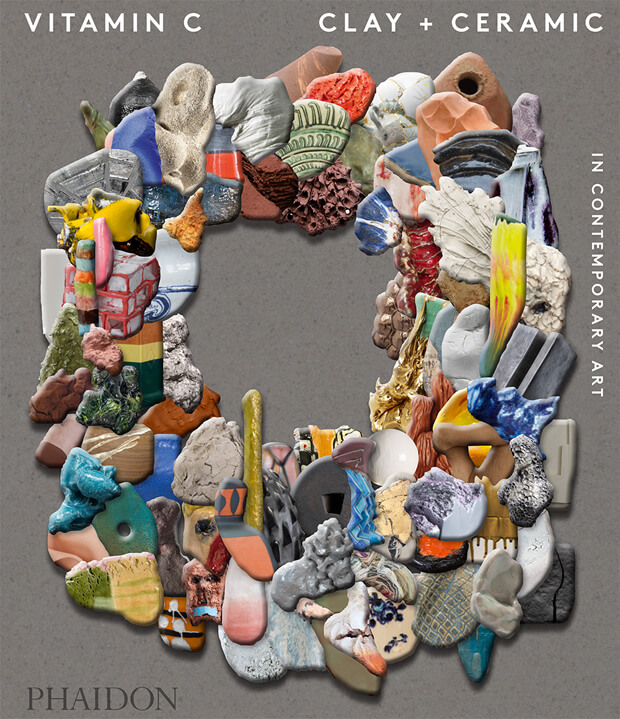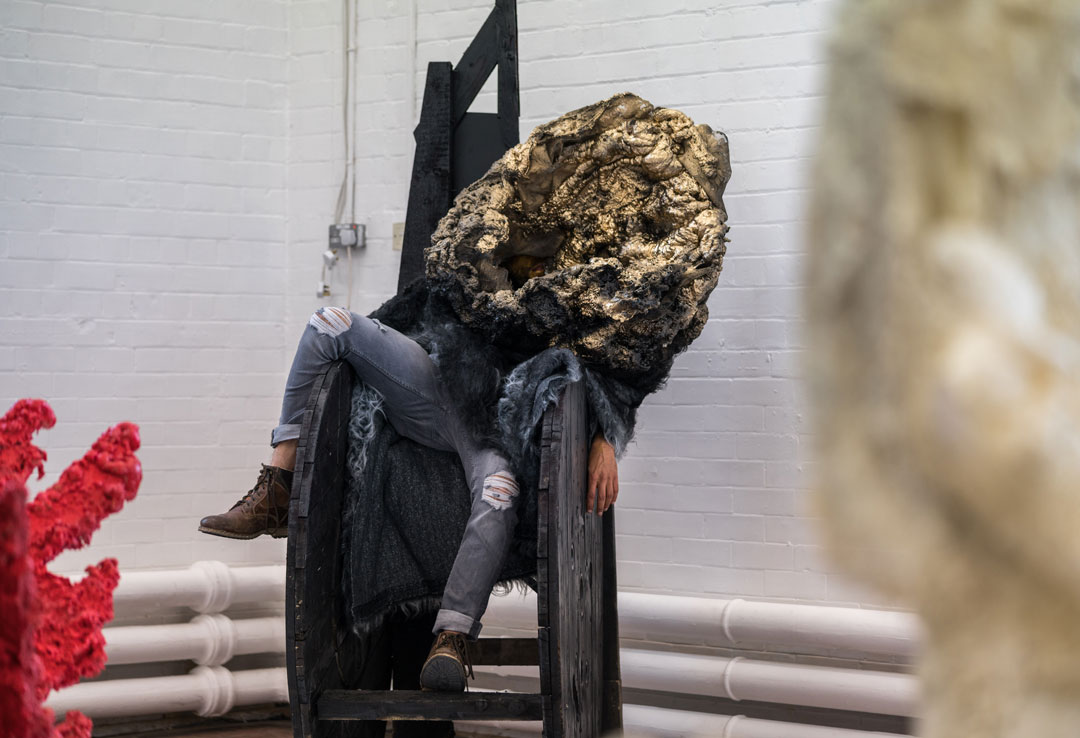
Sahej Rahal - Why I Create
Exploring the inspirations and attitudes of artists working with clay and ceramic, featured in Vitamin C
Indian artist Sahej Rahal’s practice is invested in what could be described as ‘worlding’ – creating totemic sculptures, fictional assemblages and ritualistic performances that build strange yet compelling parallel universes to our own reality. Working through film, performance and sculpture, his practice draws on sources as disparate as mythology, Japanese anime, science fiction, cinema, paganism and the intoxicating tumult of his home city Mumbai. The latter’s kaleidoscopic clash of old and new architectures is influential on his own assemblages, which use a range of media, to synthesize new creatures, architectural forms and uncanny objects. Here, the Vitamin C: Clay and Ceramic in Contemporary Art featured artist tells us why he works in the medium, what particular challenges it holds for him and who he thinks always gets it right.
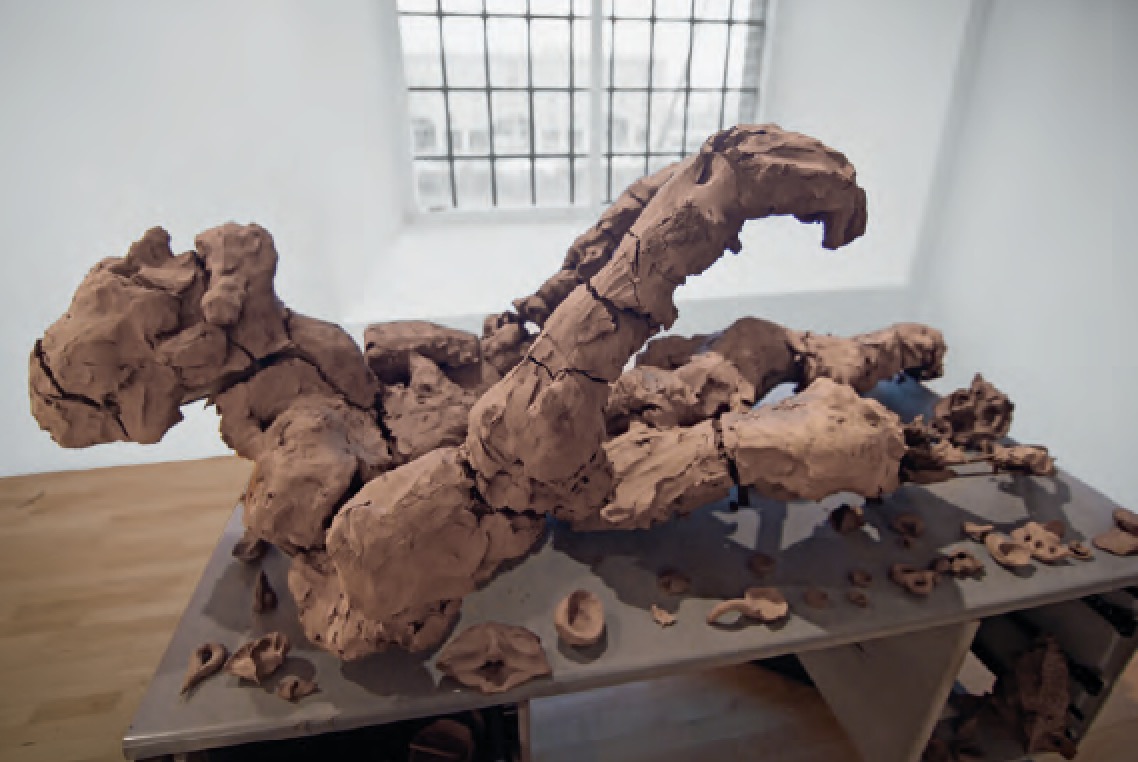
Who are you and what’s your relationship to clay and ceramics? I’m Sahej, and one day in the summer of 2014 I fell into a pile of clay. Ancient clay to be precise, in an excavation site in Pattanam about 25km from Kochi in Kerala, in what is believed to be Muziris, the ancient port city in South India that traded with the Egyptian, Greek and Roman Empires. Pliny the Elder made a note to mention that it was a place festering with pirates in his Naturalis Historia.
As it turns out, with the resurgence of the Far Right in recent years, politicians return as pirates to Muziris, and to Mohenjo-Daro, Harappa and Dholavira, holding the past for ransom. Bits of earthen pots, broken toy carts, and eroded emblems are being pieced together into a myth of an astoundingly insular nation, annihilating all markers of its rich and diverse past. I’m creating my own set of artefacts, built upon found objects, salvaged from film sets and industrial yards. Absurd fossils built upon everyday waste, ruins that set out to imagine against amnesia.
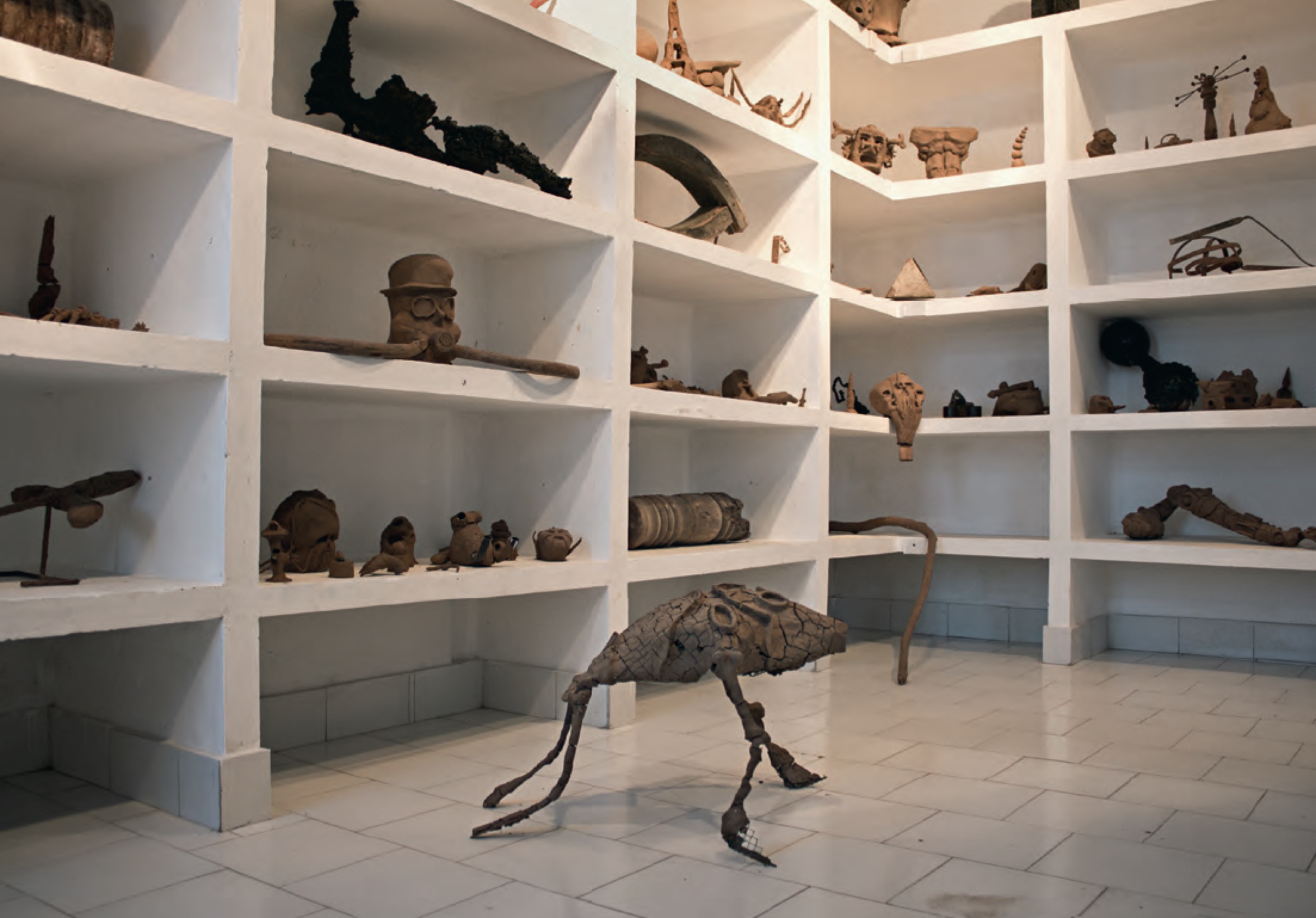
Why do you think there’s an increased interest around clay and ceramics right now? Clay is our oldest building material, and the first fragments unearthed from archeological sites are of clay fragments, resilient time capsules, waiting to tell us tales of our ancestors, and of their gods and storms and loves and follies and hubris. Today when we find ourselves at the verge of a collapse under the rising weight of our own borders we might find some truths in those tales.
Ceramics is sometimes regarded as decorative, rather than fine arts. Does the distinction bother or annoy you? I feel ornamentation is a corporeal grammar, we decorate the places we dwell in.
Whose work in this field do you admire? I am absolutely in love with the ceramic sculptures of Rosemarie Trockel, along with her work in every other medium, her work has an immense fullness of spirit awash in the pure joy of making things.
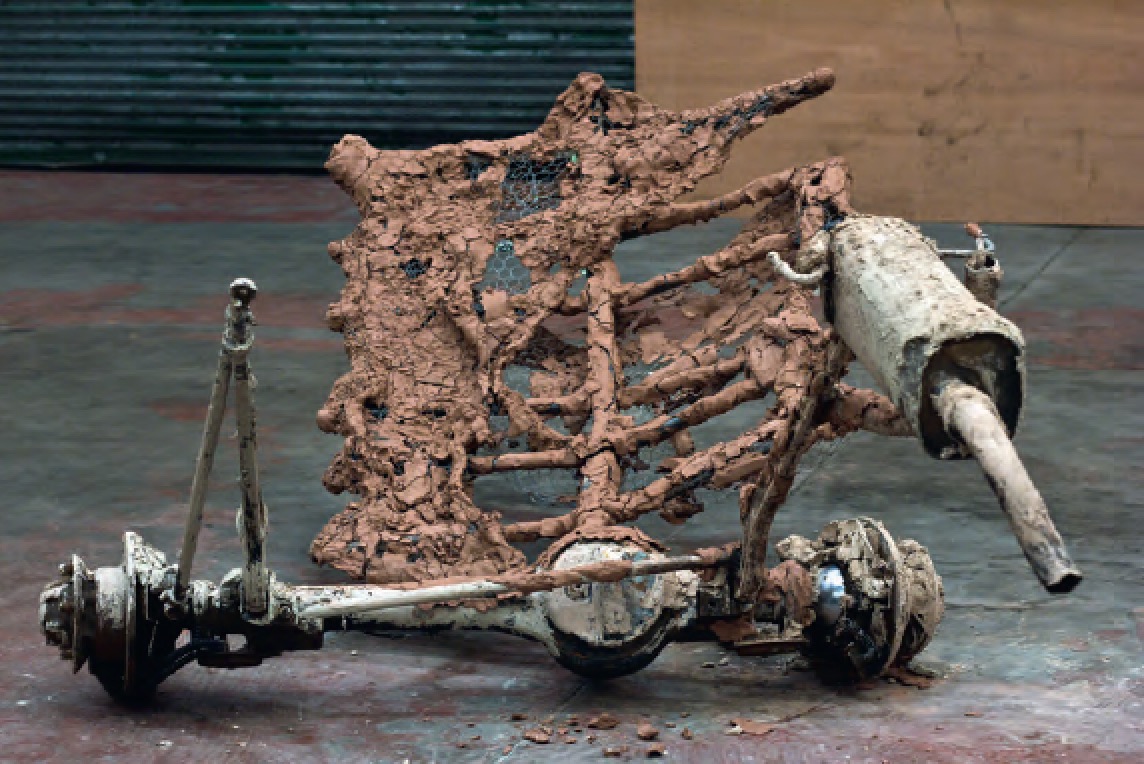
What are the hardest things for you to get ‘right’ and what are your unique challenges? The most fun part of my process is finding things to work with. Now, I make armatures out of objects that have belonged in the world we occupy, lending themselves as bones to build and imagine futuristic fossils upon. Say for example, in a skip somewhere, you find a set of church pews and you decide to make a pyramid out of them, the pews have been bent out of shape during those years that they spent under the weight of the people who gathered for Mass. You cannot measure them into the vertices of a triangle, and no amount of sketches will prepare you for how they will carry each other’s weight, at this point the only way through becomes series of slow dances with these pieces of wood, where you nudge at them bit by bit, till they decide to show you how they will stand. And once that’s over you get to do it all over again.
What part does the vulnerability of the material play in things? Clay when compared to other mediums I work in like polyurethane, is very much an alive entity. It feels heat, sweats water and breathes out air, I’m still learning all of its ins and outs but it is an immensely forgiving medium.
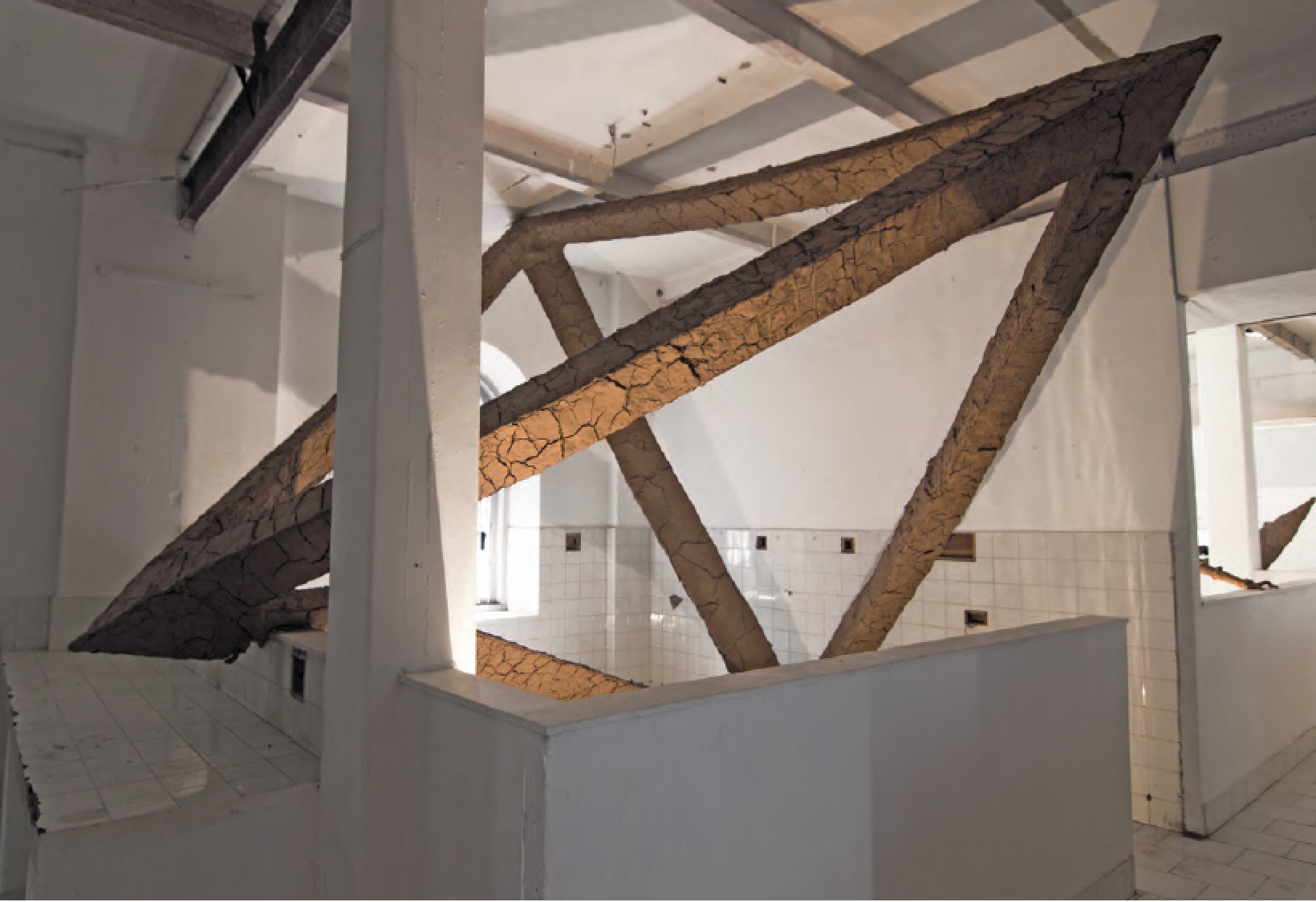
Is how you display a piece an important element of the work itself? Do you ever suggest how something might be displayed? I’ve had the chance to work within sites that aren’t white cube spaces, such as an abandoned laboratory space within Aspinwall House, during the 2014 Kochi Muziris Biennial and by a massive colonial era bronze sculpture at Exchange Flags as part of the 2016 Liverpool Biennial. The rich and often times troubling histories of these sites extend themselves onto the sculptures and vice versa, allowing for a conflation of meaning, allowing multiple narrative threads to emerge.
What’s next for you, and what’s next for ceramics? I spent July at a residency at Cove Park working towards an exhibition at the CCA Glasgow that just opened September 16 and runs until October 29.
Clay and ceramics have in recent years been elevated from craft to high art material, with the resulting artworks being coveted by collectors and exhibited in museums around the world. Vitamin C: Clay and Ceramic in Contemporary Art celebrates the revival of clay as a material for contemporary artists, featuring a wide range of global talent selected by the world's leading curators, critics, and art professionals. Packed with illustrations, it's a vibrant and incredibly timely survey - the first of its kind. Buy Vitamin C here. And if you're quick, you can snap up work by Sahej Rahal at Artspace here.
